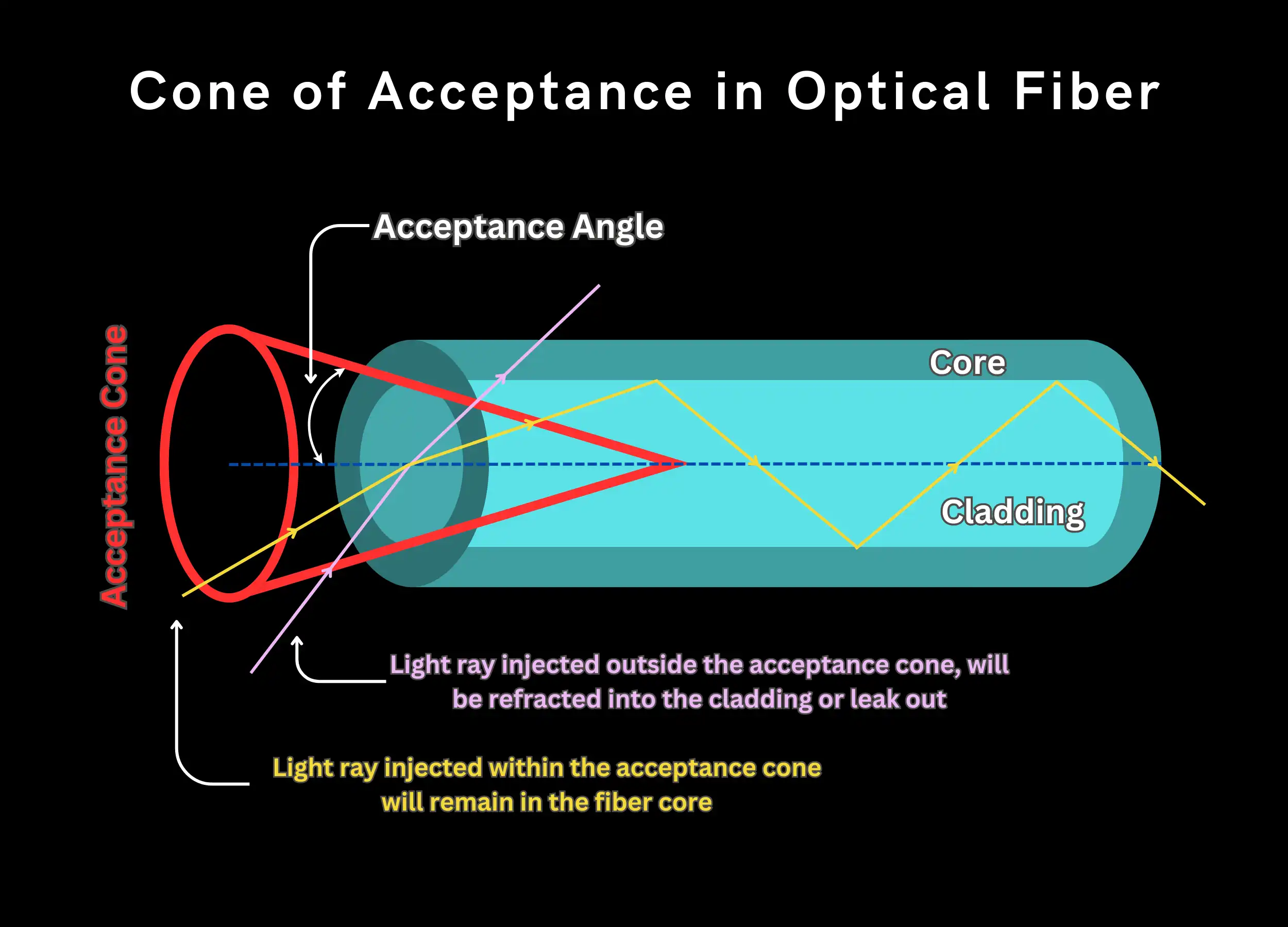
Source: YouTube
Understanding Optical Fiber Acceptance Angles
Introduction to Optical Fibers
Optical fibers are a cornerstone of modern communication technology, allowing the transmission of light over long distances with minimal loss. A critical parameter in the design and implementation of optical fibers is the acceptance angle, which determines the efficiency with which light can be coupled into the fiber.
Geometric Optics and Acceptance Angle
The acceptance angle of an optical fiber is defined as the maximum angle at which light can strike the fiber core and still be guided through the fiber. This concept is rooted in geometric optics, where light is treated as rays. For total internal reflection to occur at the core-cladding boundary, the light must hit at an angle below the acceptance angle.
Calculating the Acceptance Angle
In a simplified model, the acceptance angle is calculated for a step-index fiber, assuming the incident light comes from a medium with a known refractive index. The formula used is:
Acceptance Angle (θacc): θacc = arcsin((1/n0) * sqrt(nco2 – ncl2))
Here, nco and ncl are the refractive indices of the core and cladding, respectively, and n0 is the refractive index of the input medium.
Numerical Aperture
The term ‘numerical aperture’ (NA) is used to describe the light-gathering ability of the fiber. It is determined by the refractive index contrast between the core and cladding. A higher NA indicates a larger acceptance angle, allowing more light to be coupled into the fiber.
Wave Optics Considerations
While geometric optics provides a basic understanding, wave optics offers a more comprehensive approach, especially for optical waveguides. Real light beams have finite beam radii and divergences, which are not accurately represented by simple rays.
Single-mode vs. Multimode Fibers
For multimode fibers, the acceptance angle calculated through geometric optics can be used to estimate the maximum input angle for efficient light coupling. However, for single-mode fibers, this estimation is less precise. The transition between guided and non-guided light is gradual, and wave optics must be considered for accurate predictions.
Applications in Nonlinear Optics
The concept of acceptance angle also extends into nonlinear optics, where it plays a role in critical phase matching. In this context, the term has a different meaning, emphasizing the versatility and importance of understanding acceptance angles in various optical applications.
Conclusion
Understanding the acceptance angle of optical fibers is crucial for optimizing light coupling and minimizing losses in fiber optic systems. While geometric optics provides a foundational understanding, wave optics offers a more detailed and accurate analysis, particularly for advanced applications.

Source: Fiberopticx
Feel free to comment your thoughts.



